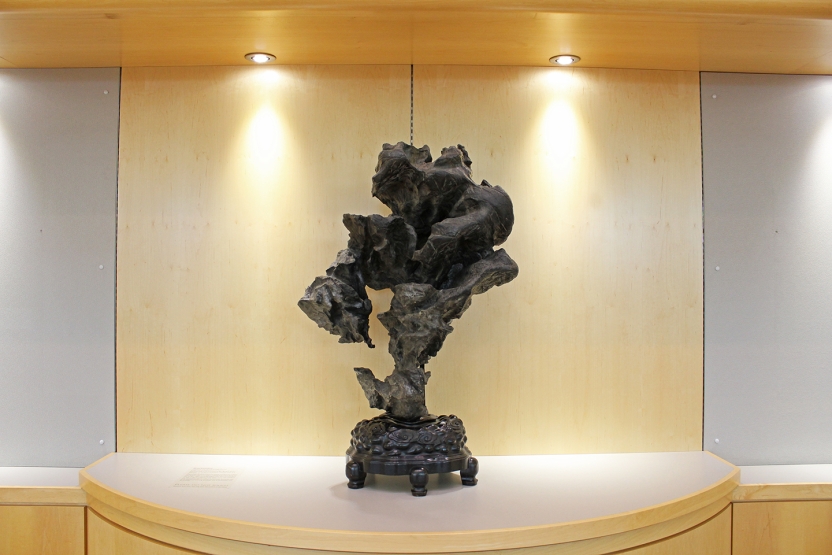Anonymous

Anonymous (Chinese)
Scholar’s Rock, late 19th–early 20th century
Limestone with carved wood base, height 44 inches
Collection of Middlebury College Museum of Art, Vermont. Purchase with funds provided by the Barbara P. and Robert P. ’64 Youngman Acquisition Fund for Asian Art, 2004.023.
Location: Davis Family Library, 2nd Floor, East reading room
Appreciated for their contorted shapes and fissured surfaces, ornamental rocks have been collected in China since the Han dynasty (206 B.C.E.–220 C.E.). Small rocks were displayed on scholars’ desks, while the largest ones were incorporated into gardens. They thus played an ornamental role analogous to that of figural sculpture in the West.
The connoisseurship of rocks was intimately bound up with philosophical notions of transformation and concepts such as yin (negative) and yang (positive), and xu (emptiness) and shi (solidity). Rocks from Lingbi are prized not only for their fantastic forms, but also for the resonant sound they produce when tapped.
